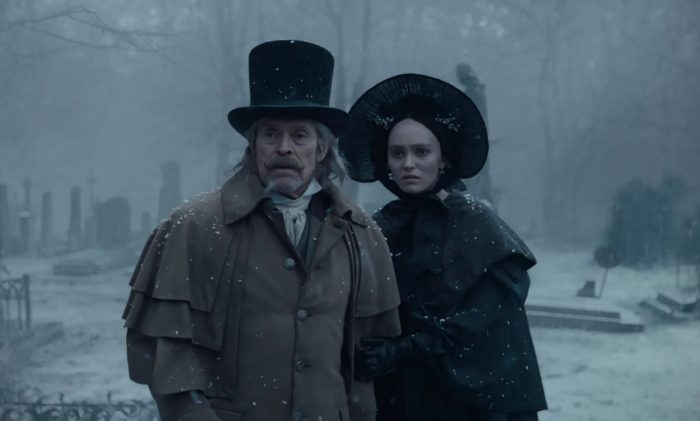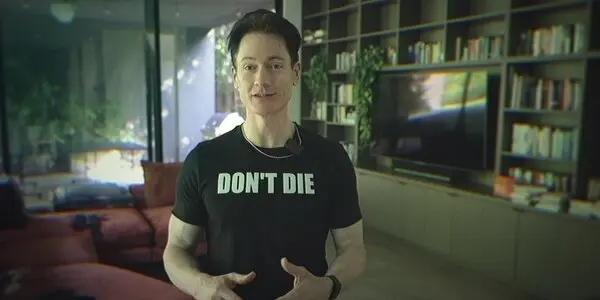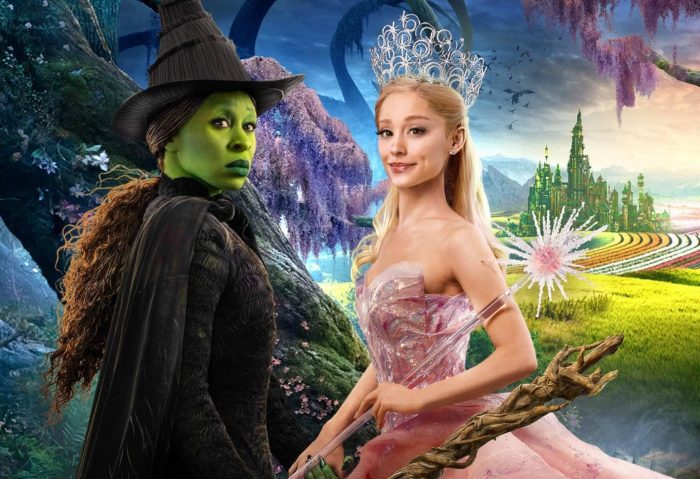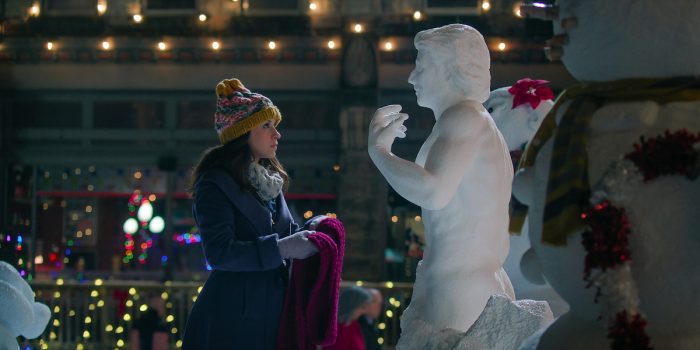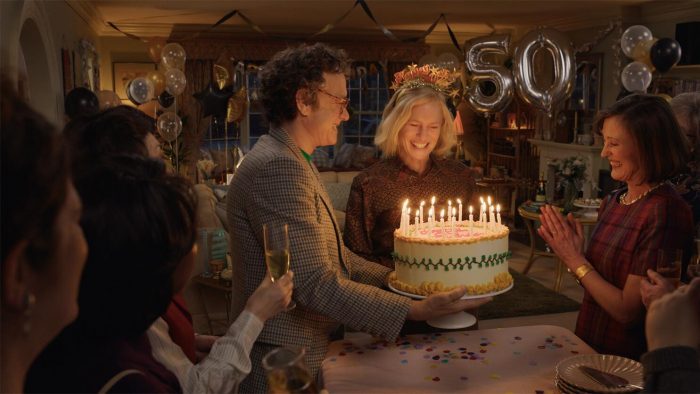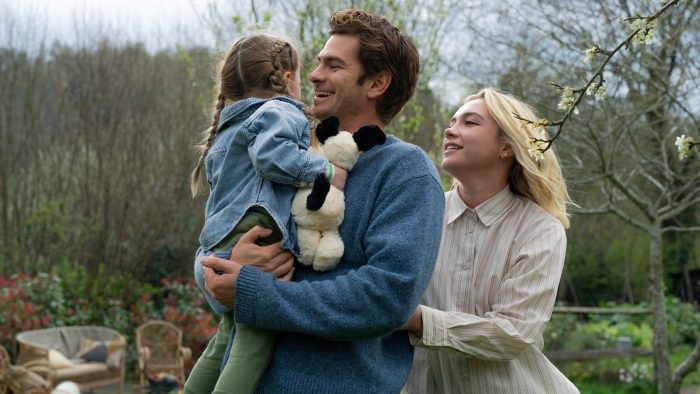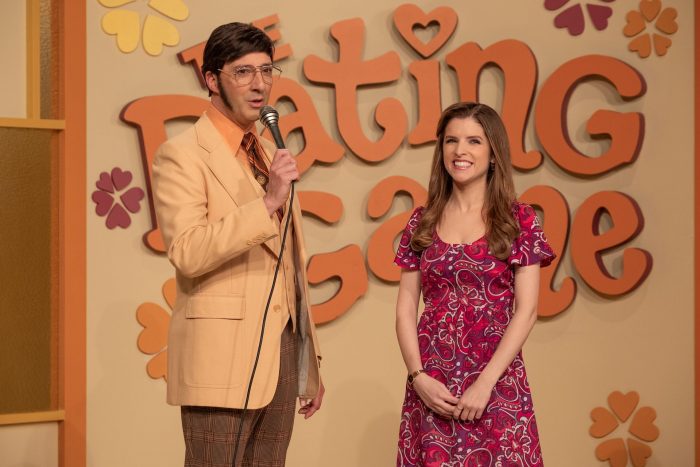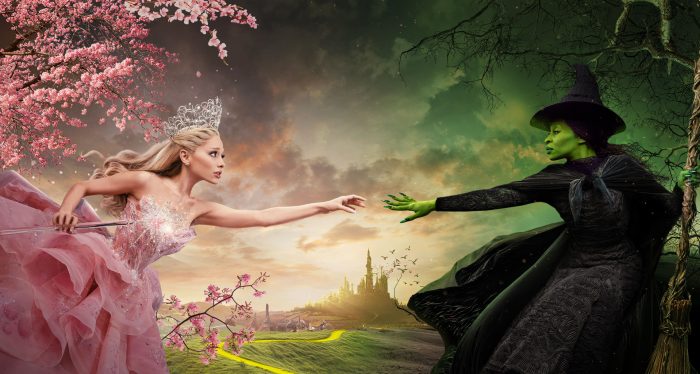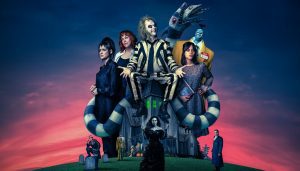Reviewed by Jeffrey Sanzel
Bram Stoker’s 1897 Dracula remains the definitive vampire novel. Written through letters, diary entries, and newspaper articles, the book is a landmark that transcended horror to be accepted as literature.
F.W. Murnau’s silent film Nosferatu: A Symphony of Horror (1922) was the story’s premiere screen incarnation. Attempting to avoid copyright infringement (or pay royalties), the names and location were changed: Dracula was renamed Orlok. However, Stoker’s widow successfully sued, and a court ordered all prints destroyed. However, several copies survived, and the film became a classic with a lasting influence over cinematic history. The image of Max Schreck’s rat-like visage is century-old iconagraphic image.
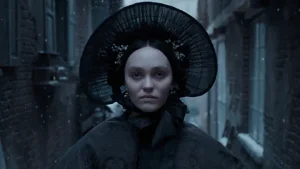
Photo courtesy of Focus Features
In 1979, Werner Herzog’s remake, Nosferatu the Vampyre, restored the original character names, with Klaus Kinski as Dracula. Many scenes were filmed twice, once in German and once in English. The meditative take was well-received by critics and audiences. Shadow of the Vampire (2000) fictionalized the making of the original film, with the premise that actor Schreck (Willem Dafoe) was an actual vampire.
Vampirism is a celluloid favorite and the most popular in the creature feature world. There are over two hundred Dracula movies. Dracula has ranged from the elegance of Bela Lugosi’s indelible, tailcoated count to John Carradine’s melancholy interpretation. In nine outings, Christopher Lee emphasized the character’s raw animal nature. A higher level of charm and sensuality came with Louis Jordan, Frank Langella, and Gary Oldman.
Writer-director Robert Eggers, whose previous films include The Witch, The Lighthouse, and The Northman, now offers his vision. He follows most of Stoker’s initial plot (changing the names) but relies on the monstrously hideous Count Orlok of the 20s. The word “vampire” is never uttered. The title roughly translates from the Romanian as “the offensive one” or “the insufferable one.”
Orlok is a demonic embodiment of all that is evil and foul. He represents the pestilence of city and soul. Eschewing the traditional romantic elements, Eggers’ Orlok not only dwells in the darkest corners but is the shadow itself. Under layers of prosthetics, Bill Skarsgård’s Orlok is a diabolic combination of vermin and reptile sent from the lowest circle of hell. He exists to consume all life: he is death itself. “I am appetite,” he states. “Nothing more.”
The world of Nosferatu is one of disease. Orlok brings a plague of rats, decimating the city. But he is also a destroyer of souls, seeding denial and doubt. Even the heroic Prof. Albin Eberhart Von Franz lives in disgrace for his belief in the occult. Based on Dracula’s Van Helsing, Willem Dafoe lends an eerie twinkle to the brilliant eccentric (if only Dafoe did not seem so uncomfortable in the costumes). Orlok’s minion, Herr Knock (Simon McBurney), is as vile a Renfield ever depicted, chewing the words (and living animals) with a cackle and a quip. Nosferatu is a universe of sweat, blood, and unending pain.

Photo courtesy of Focus Features
Several elements make Nosferatu worthwhile. Eggers’ literate script honors Stoker’s novel and Henrik Galeen’s 1922 screenplay. While sometimes overly declarative (a common trap in the horror genre), the dialogue is rich and varied, letting the characters speak in individual voices. He finds moments of grim humor and edgy wordplay. He strongly succeeds in addressing issues of Victorian repression and the accusations of female hysteria. He captures the ominous with what is absent: the driverless carriage with the door slowly swinging open, demanding the Jonathan Harker stand-in, Thomas Hutter (Nicholas Hoult), to journey to the count’s castle. Slow pans and sharp cuts bring an equal shock. Eggers pulls no punches: the sight of two small coffins, taller than they are long, resonates with unfathomable loss.
Jarin Blaschke’s moody, cold cinematography complements the constant atmosphere of dread. Craig Lathrop’s production design evokes the cold vastness of the Carpathian Mountains and the congested and later infested Wisburg. Costume designers Linda Muir and David Schwed capture the rustic Transylvania Romani, the doomed sailors, and the lush formality of the wealthy. (While set in Germany, the overall effect feels like Stoker’s Victorian London.)
At the film’s heart is not Robert Eggers’ Orlok but Lily-Rose Depp’s exceptional portrayal of the tormented Ellen, called by dark forces, destiny, and a pull towards death going back to her childhood. In turns terrified and possessed, she easily alternates between fear and ferocity, torn between two realms. “Does evil come from within us or from beyond?” she questions. She owns the disturbing physicality and balances the character’s knowing eroticism with a well of innocence.
A scene late in the film between Ellen and her husband, Thomas, is raw, unflinching, and brutal. Depp’s performance is layered and nuanced, elevating the usual “Scream Queen” trope. Ultimately, she manifests the film’s darkness and moral core.
Nosferatu does not reinvent the vampire movie but offers strong visuals, a shifted perspective, and a central performance that transcends previous Dracula films.
Rated R, the film is now playing in local theaters.

